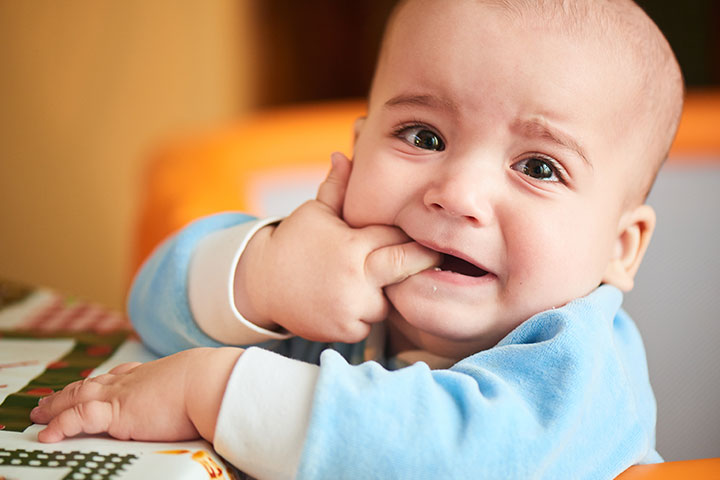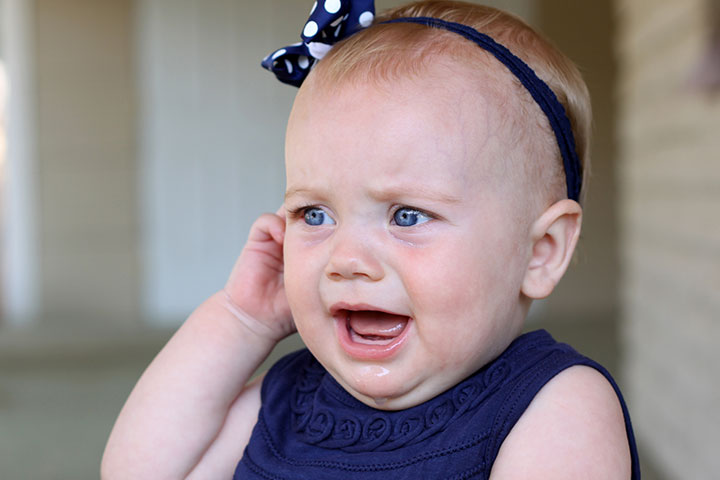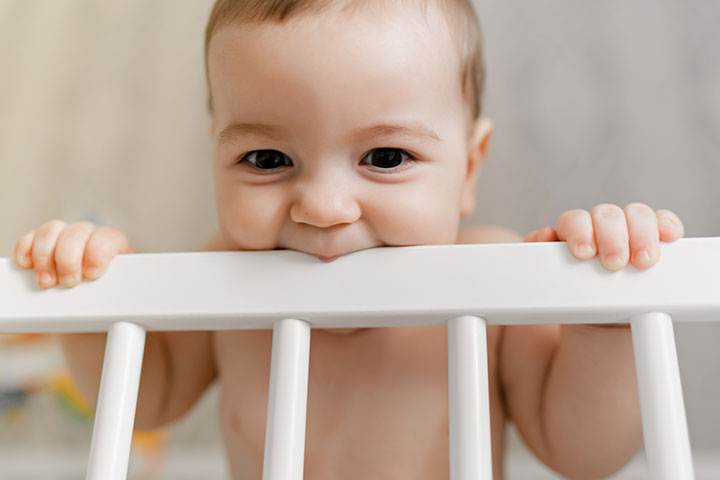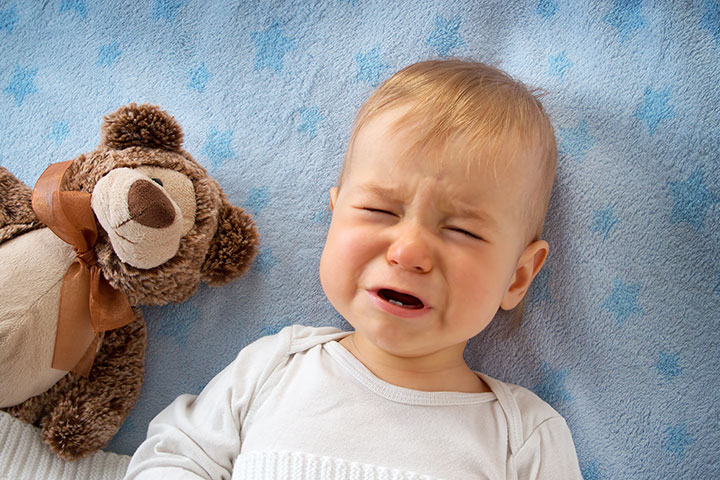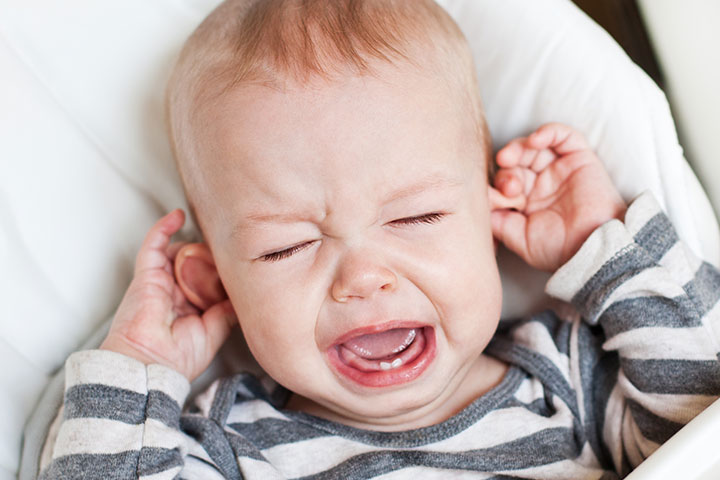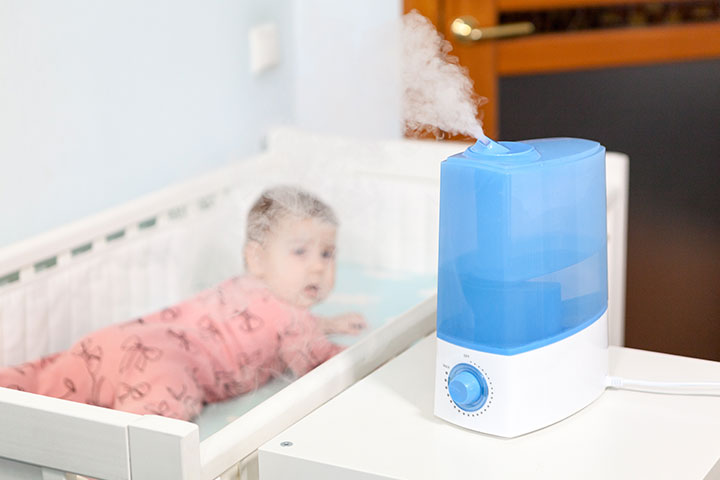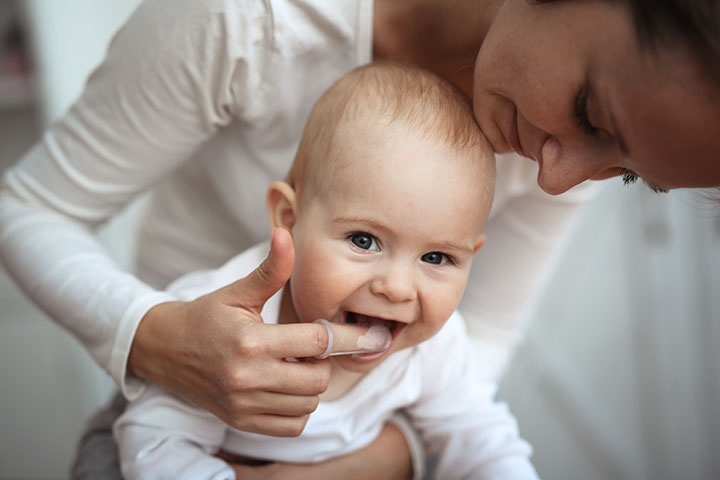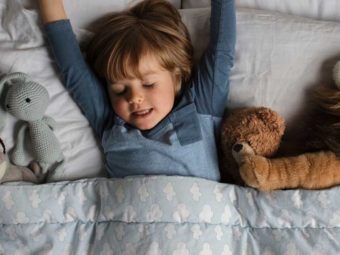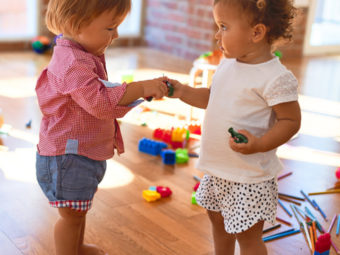
Image: Adobe
Teething is an important milestone for your little one. Parents look forward to that cute smile with one or two pearly white teeth. However, teething has its fair share of problems for babies and their parents. While some babies might not feel any teething symptoms, others can suffer from swollen gums, disrupted sleep, loss of appetite, etc. So if your baby is between 4 and 12 months and suddenly looks more irritable, cranky, and is increasingly rubbing their ears, chances are that they areteething.
When Does Teething Begin For Infants?
Image: Adobe
While the first tooth may appear anytime between 6 to 12 months, teething begins a couple of months before that. So most babies begin to show teething symptoms between4 to 7 months. However, some babies can get their teeth a little later, so parents should not get worried.
What Is The Order Of Tooth Eruption
Image: Adobe
Theorder in whichyour baby’s tooth will come out depends on your family history. But the most common order is lower front teeth followed by opposite top two. Then two more come on top, on either side of the top two, followed by two more at the bottom. After that, the first molar appears, and by the time your kid is two and a half years old, they will have all their milk teeth in place.
What Are The Common Symptoms of Teething
Teething symptoms vary from baby to baby. While some babies may experience a lot of discomfort, others may experience no sign at all. Still, to make things easier for new parents, here are some common symptoms of teething and what you can do about it:
Image: Adobe
Babies start drooling a month or weeks before their first teeth erupt. So if you find your baby suddenly drooling a lot, maybe the first tiny pearl white is not too far away!
What You Can Do: Since excessive drooling can lead to rashes around the mouth, on the cheeks, and chin, you should try and keep the area as clean and dry as possible. Wipe off the drool with a soft clean cloth and use a barrier cream to soothe the irritated and sore skin.
Irritability:
Image: Adobe
The molars and first teeth are the most uncomfortable. Your baby might become fussier and seem more cranky than usual. This is caused by the discomfort that is caused when the teeth erupt through the gums.
What You Can Do: To give your babysome relieffrom discomfort. Try rubbing your baby’s gums with a wet washcloth or just your finger. A gum rubbing finger pad also helps.
More Biting And Gnawing:
Image: Adobe
Chewing and gnawing on anything is a typical sign that your baby is teething. They could be chewing on toys or even their fist. This is because chewing helps relieve the pressure on their gums.
What You Can Do: Try giving your baby something cold to chew on, like a cold teething ring or toy. You can also give them a blunt cold spoon to chew. But do not freeze anything as this might hurt their sensitive gums.
A Slightly Raised Temperature:
Image: Adobe
It is normal for your baby to have a slightly higher temperature during teething.
What You Can Do: Offer your baby plenty of fluids but skip out on fruit juices. Try to keep them cool by using a fan. However, if your baby hasfever more than 100.4 degrees, contact your baby’s health care provider immediately.
Rubbing Cheeks Or Pulling Ears:
Image: Adobe
Pain from teething can reach the ears, especially when the molars are erupting. This will lead them to pull their ears or rub their cheeks. However it is important to note that ear pulling could also be a sign of an ear infection. If the symptoms are accompanied by high fever, contact your pediatrician immediately.
What You Can Do: You can massage or rub the gums for one or two minutes to help with the discomfort.
Coughing:
Image: Adobe
The extra saliva produced during teething can also lead your baby to cough or gag.
What You Can Do: You can use a humidifier in your baby’s room. This helps create a moist, soothing air for the baby’s irritated throat. But again, if the cough and cold are accompanied by high fever or flu-like symptoms, then contact your baby’s pediatrician immediately.
如何照顾宝宝的新牙齿吗?
Image: Adobe
When your baby’sfirst toothappears, use a soft-bristled toothbrush to clean their teeth at least twice a day. You can also use a finger brush. Remember to use only grain-size fluoride-infused toothpaste till your baby learns how to spit it out.
Generally the symptoms of teething can be managed at home. However if you feel your baby is particularly uncomfortable or it is interfering with their eating or sleeping, do not hesitate to contact your pediatrician.

